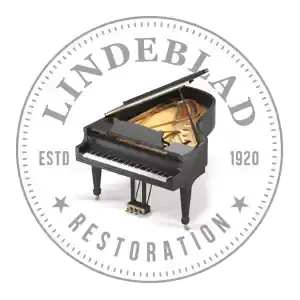When it comes to pianos, newer isn’t always better. At Lindeblad, we believe that sometimes it’s best to restore the piano that you already have rather than buy a new model off the showroom floor. Many antique pianos were carefully handmade by skilled craftsmen, have stood the test of time, and possess much more character than those new pianos you’ve been eyeing within your price range.
Choosing to invest the money you would spend on a new piano into the restoration of your current instrument can pay off in big ways. But where should your money go? How can you get the most back for your buck?
Read on to see the key areas that Lindeblad focuses on when making an antique piano look and sound like the new piano you want. We unpack this more in our Restoration 101 video series.
Soundboard and Bridges
The soundboard is the heart and soul of a piano and is designed to amplify the sound that vibrating piano strings make. Lindeblad will refurbish the soundboard if possible, but sometimes this integral piece must be replaced. When assessing a soundboard, we measure the remaining height of the “crown” (the slight upward arch towards the center of the soundboard).
If the crown has retained good height and the overall condition is in good shape, we will reuse it. If it is spent, Lindeblad will replace it with a custom, hand-made soundboard of Sitka Spruce (you can learn more about this fascinating process here). If the soundboard is replaced, Lindeblad will give you the option of applying a new decal to it. This is a purely cosmetic step, but many feel it brings back the original character of the instrument and dresses up the piano.
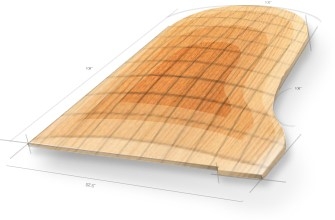
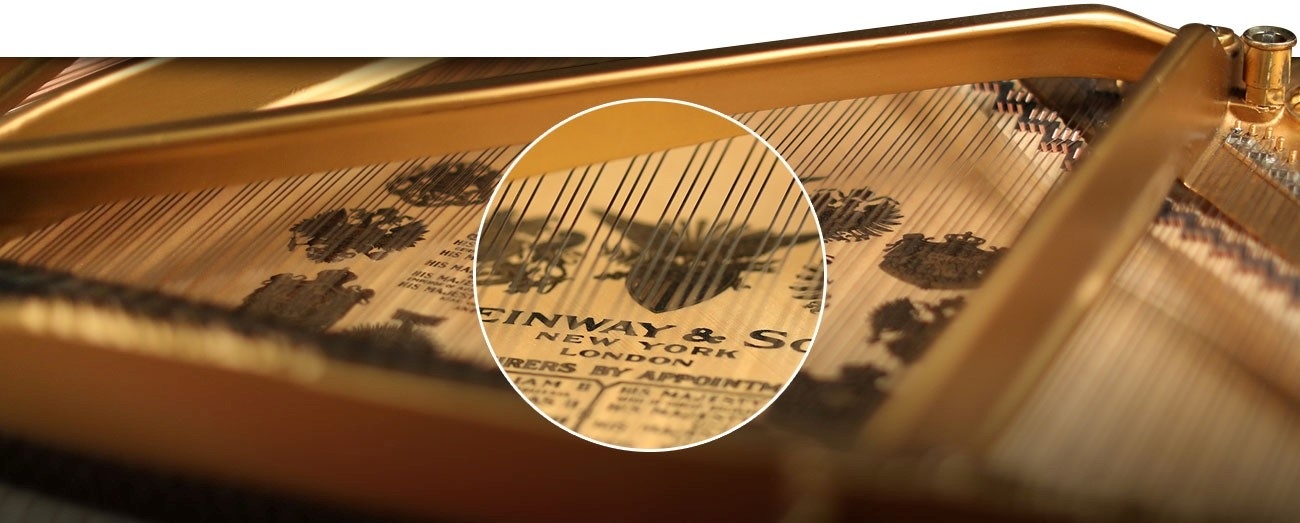
The bridges of a piano distribute the downward pressure of the strings and then transfer those vibrations to the soundboard. Bridges bear a tremendous amount of pressure; therefore, the strength of the wood is of utmost importance. If the integrity of the bridge wood has been compromised, Lindeblad will craft new bridges for the instrument.
Pinblock
The pinblock is made of very hard wood and is located towards the front of the piano, under the harp. Its job is to keep the piano in tune by maintaining a tight grip on the tuning pins. Over time, due to the pressure put on each pin when a key is struck, the pinblock can lose its hold of the tuning pins. Sometimes pinblocks are in decent enough condition to refurbish. If this is the case, Lindeblad’s craftsmen rebore each hole a bit larger than the original to expose fresh wood. They then install slightly oversized pins into the new hole to renew the pinblock’s tight grip on each pin. This method has proven to work extremely well and produces the same effect as a new pinblock.

Harp
The harp is the frame of the piano and is made of a single piece of heavy cast-iron. If the soundboard is the heart of the piano, the harp is the skeleton that secures the strings and supports the 20,000 lbs of tension that the tightened strings create. The harp dominates the interior of the piano and, unlike almost every other part of the piano, is always refurbished – it is never replaced. If a harp was wet sand cast, then both the sound quality and the durability of the harp is going to far outlast that of a mass-produced harp likely made through the V-Pro casting process. Read more about the different casting processes in a recent blog post.
To restore the harp, it is removed from the piano, stripped, and examined for blemishes. Dings and dents are filled and smoothed, and our restoration team primes and re-bronzes the entire harp. Next, we hand paint any raised lettering in black, apply new felts where the strings pass into the pinblocks, and replace existing hardware with longer-lasting, more durable nickel-plated hardware. This multi-step process results in a like-new finish that is bright, eye-catching and brings the instrument back to its former glory.

Strings and Tuning Pins
When a piano lid is lifted, the strings are the first component of the instrument that catches your eye. A piano contains over 200 strings, and a good set of strings should last up to 70 years. If we find that we need to replace the strings in your instrument, Lindeblad will re-string the instrument with Mapes International Gold Series strings. Treble range strings are made of the finest Swedish steel and bass range strings are of the same Swedish steel but are also coiled with copper.
Tuning pins are replaced with Diamond tuning pins that are imported from Germany, and new agraffes of brass are installed. Agraffes must be replaced because they are very susceptible to wear, and can break easily. Lindeblad uses the same strings, agraffes, and tuning pins that Steinway uses, to produce a superior tone and a durable restoration. These high-quality parts produce a sound that is often superior to that of a new piano!
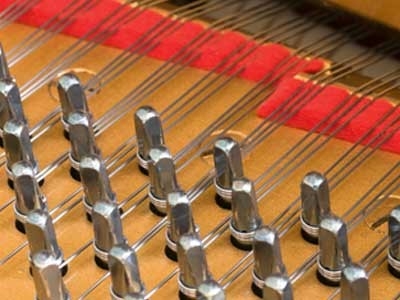
The Action
The hammer, shanks, flanges, and wippens collectively make up the action of a piano. When working properly, the action transfers the force of the keystrokes to the strings. The action controls the volume, tonal effect, and repetition of each note and can make or break the tonal quality of a piano. Because of this, Lindeblad takes great care to ensure that each piece of the action is thoroughly assessed during the restoration process. If any piece is lacking, it is replaced.
Pedals and Keys
The pedals and keys are, in a way, the jewelry of the piano. They are highly visible and are often dazzling and attractive. Most pianos have three pedals that help to suspend and/or soften notes, which allow the musician to achieve new levels of musicality. These can usually be found in good condition on an antique piano and are removed, sanded and smoothed, and are nickel-plated to produce a dazzling, factory-fresh finish.
Highly visible and, perhaps, the most recognizable feature of a piano, the keys are, in essence, the way the musician makes music. Each of a piano’s white keys is made of spruce that is covered in either ivory or acrylic, and sharps are covered with a black finish. Every key’s condition is assessed and keys that are in good working order are simply sanded and polished. Ivory keys are often found on many antique pianos, and if they are in good condition Lindeblad will restore the keyboard to look like new, by filling in cracks or chips, sanding, and polishing. However, because the use and production of ivory have been banned in many countries, including the United States, we no longer replace ivories with new ivory keys. To achieve the look of ivory, Lindeblad custom mixes an acrylic coating to match the existing ivory keys – making the replacement keys indistinguishable from the originals.
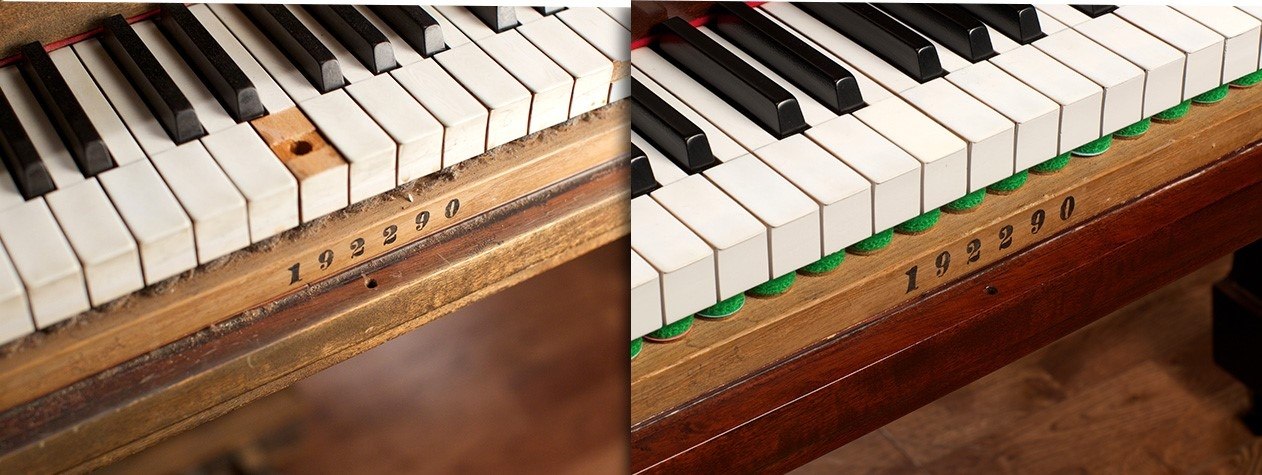
Color and Finish
Clearly the most visible part of the piano, the cabinet houses the instrument’s internals and makes the piano's first impression. At Lindeblad, we value a piano’s cabinet more than just the sum of its looks. The cabinet enables the vibrations of the soundboard to resonate throughout the instrument and contributes to the overall quality of the sound it makes. Cabinets are found in a variety of woods and finishes. To showcase the grain, many instruments are stained; however, pianos are also commonly found in a rich, glossy black painted finish.
Because the cabinet gets the most exposure, it is often well worn in older instruments. Lindeblad has the tools and skills necessary to repair most cabinet damage and restore the original patina. To achieve this, we strip the case of its existing finish and apply layer after layer of new stain, to build the finish up to the customer’s specification. Finishes can be open or closed pore to produce different textures, or have a satin, semi-gloss, or high-gloss finish. In addition, all steel hardware (pedals, pedal rods, hinges, etc.) is nickel plated for a light-reflecting finish. Careful attention to cabinet restoration results in a showroom-ready end product.
Check out more of our Before & After Restoration photos here!
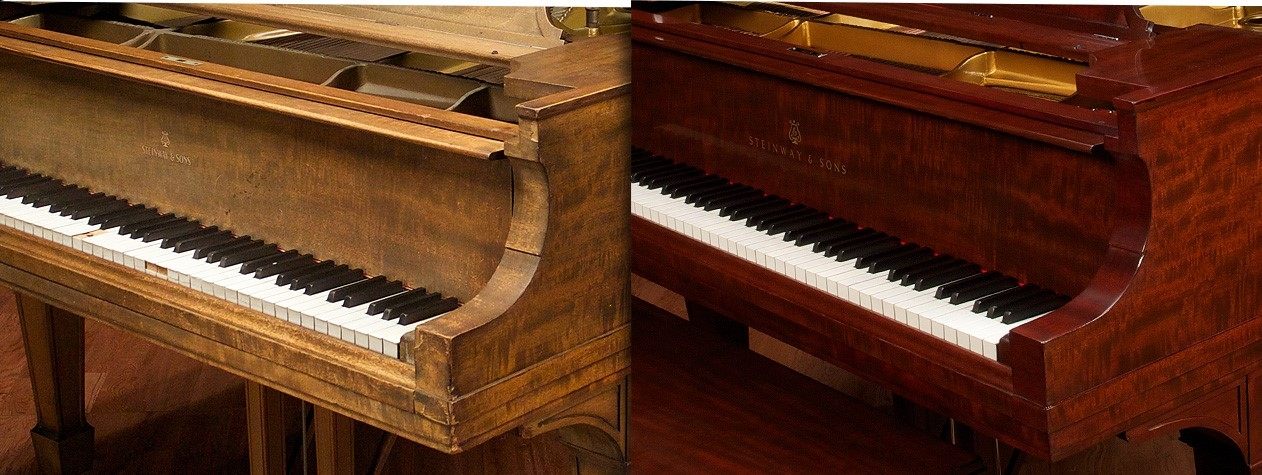
Making the decision to restore a piano, rather than purchase a new one, is certainly a worthwhile endeavor. Older, handmade pianos have so much character and history associated with them that new models just don’t possess. Entrusting your older piano to our restoration experts affords you the best of both worlds – a piano with a past that looks brand new!
Contact Lindeblad to let us walk you through any questions you might have regarding the decision to buy new, versus restore your current instrument. We look forward to walking through this process with you!
Images:
https://www.lindebladpiano.com/learn/soundboards/
https://www.classicfm.com/discover-music/instruments/piano/how-to-make-steinway/iron-plate/
http://www.wengleemusic.com/images/CSteinbert/construction%201.JPG
